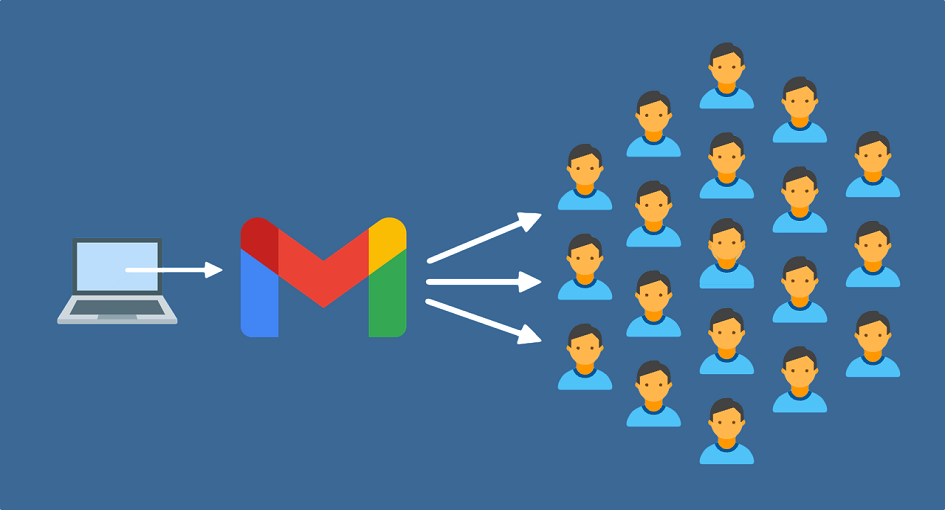
Email marketing continues to be a powerful tool for communication, customer engagement, and marketing. However, the dynamics of bulk email sending are evolving to address issues such as spam and to enhance user experiences. Google, with its widely used email service Gmail, has been instrumental in shaping these changes. Explore Google’s new rules for bulk emails senders, which not only affect email marketers but also anyone who relies on email as a means of communication.
At the heart of Google’s new rules for bulk emails senders is the principle of email authentication. Senders must authenticate their emails through mechanisms like SPF (Sender Policy Framework), DKIM (DomainKeys Identified Mail), and DMARC (Domain-based Message Authentication, Reporting, and Conformance). These authentication protocols ensure that emails are sent from legitimate sources and help reduce the risk of phishing attacks.
To enhance email security and privacy, Google encourages the use of TLS (Transport Layer Security) for encrypting email transmissions. This practice helps protect the contents of emails from eavesdropping, ensuring that sensitive information remains confidential during transmission.
Google has refined its content filtering algorithms to better identify and filter out spam, misleading content, and potentially harmful emails. Bulk email senders need to ensure that their email content is not misleading or overly promotional to avoid landing in the spam folder.
Google emphasizes the importance of including clear and easily accessible unsubscribe options in marketing emails. Bulk email senders must respect recipients’ preferences and promptly honor unsubscribe requests to maintain a positive sender reputation.
User engagement metrics, including open rates, click-through rates, and email reply rates, hold a significant place in Google’s rulebook. Senders with higher engagement levels tend to enjoy better inbox placement. This encourages email marketers to prioritize delivering valuable content to their recipients rather than inundating them with messages.
Google emphasizes the importance of list hygiene, advocating for the removal of inactive or disengaged subscribers. Segmentation and targeting are key strategies to ensure that emails are sent to the most relevant audience, increasing the likelihood of engagement.
Google provides feedback loops that allow bulk emails senders to receive notifications when recipients mark emails as spam. This system helps senders identify and address issues promptly, which in turn maintains a positive sender reputation.
With the increasing use of mobile devices for email access, Google encourages the importance of mobile-responsive email design. Emails should display correctly and be easy to read on a variety of screen sizes and devices.
Email headers and metadata should accurately represent the sender’s identity and purpose. Misleading or fraudulent header information is discouraged as it erodes trust in email communications.
Google has specific sending limits in place to prevent abuse and ensure that email senders comply with best practices. Senders should be aware of these limits and monitor their email-sending patterns to avoid disruptions in email delivery.
Google emphasizes the importance of educating users about email security and responsible email practices. This includes recognizing phishing attempts, understanding the significance of email authentication, and being cautious when sharing sensitive information via email. Bulk email senders can contribute to user awareness by providing clear and informative messages that educate recipients about email security best practices.
Google encourages bulk email senders to actively monitor deliverability and email performance metrics. This includes tracking email opens, click-through rates, and delivery rates. By closely monitoring these metrics, senders can identify issues early and make necessary adjustments to maintain strong email performance and ensure their messages reach the intended audience.
In conclusion, Email remains a vital channel for communication, marketing, and customer engagement. Google’s new rules for bulk emails senders are designed to enhance the overall email experience, reduce spam, and improve email security. Adhering to these rules is not just a matter of compliance; it is a way to maintain a positive sender reputation and ensure that your emails reach their intended recipients’ inboxes.
For email marketers and organizations, embracing these rules can lead to more effective email campaigns and better relationships with their audiences. In today’s dynamic digital landscape, understanding and adhering to Google’s guidelines for bulk email sending is essential for staying at the forefront of email communication. This not only promotes responsible email marketing but also ensures that emails continue to serve as a reliable and valuable means of communication.